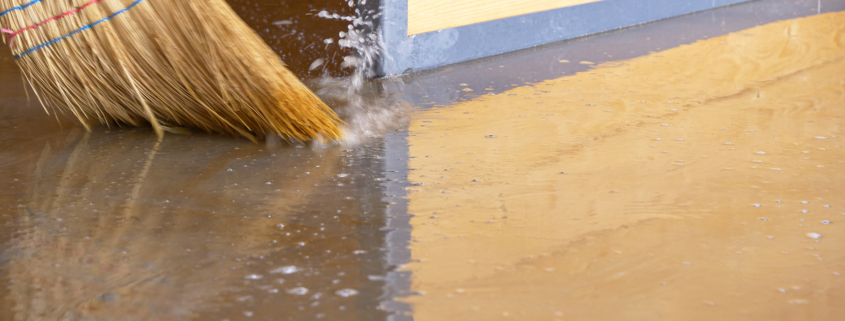Seasonal Thaw – How to Protect Your Home From Spring Basement Flood
There’s nothing like a spring basement flood to take the joy out of the new season – protect yourself before a crisis!
We welcome all the many signs of spring – crocuses and other spring buds, longer days, and the return of all of our favourite feathered friends. We even welcome the rain as it helps turn our surroundings from dreary brown to vibrant green.
But, rain combined with the springtime melt and winter runoff can wreak havoc on our homes with incidences such as basement floods if we’re not prepared. The fact is, melting in springtime combined with rain can damage the grading of our yards and the foundations of our homes, both of which invite the increased likelihood of basement flood.
Prepare BEFORE a costly basement flood crisis!
Consider the condition and contents of your basement. If it’s been finished, you risk damage or complete ruin to your flooring, drywall, furnishings, and valuable personal items and documents should your basement flood. Prevention will save you a lot of time, labour, money and possibly even heartache, so do as much as you can to keep your property safe.
Repair cracks in your foundation
As the snow retreats and as soon as you’re able, take the time to examine the exterior foundation of your home – this includes both basement walls and floors. Fill them with crack filler for masonry concrete squeezed from a caulking gun if you find cracks. Except for tiny shrinkage cracks that occur on homes of all ages, an experienced contractor should inspect any serious foundation cracks.
Clear gutters and downspouts
Keep your gutters clear of debris. Be sure to position the downspouts to direct water away from your foundation. The recommendation is to drain the water no less than three feet away, so it might mean running extensions to ensure enough distance from your home.
Check your window wells
Below-grade basement windows can be problematic during this time of year. But, for protection from water, you can install window well covers that fasten securely to your home’s foundation. They’re made from clear acrylic, allowing light to enter while protecting them from rain, pests, and leaves.
Check your septic or sewer system
This is a great time to have your septic field checked if you’re due for a pump. Sadly, during periods of rain, an overtaxed septic system or a clogged sewer is a disaster waiting to happen.
Check your sump pump
When using a below-grade sump pump, it’s important to keep it free of debris. If you use a portable pump, position it in the lowest part of the basement and ensure you’ve connected it to a power source. It’s no use if it’s not running!
Review your home insurance coverage
To confirm that you have protected your home in the event of a flood, be sure to review your homeowner’s policy. Depending on your location and circumstances, you might consider additional coverage, particularly if yours is a finished basement.
Questions about your home insurance and flood protection? Talk to us!
What to do in the event of flooding
When it comes to our homes, excess water is definitely not your friend. But, if, as the snow retreats and the rains come, you experience flooding in your basement, here’s what to do:
First, you have to remove all the water. When the water goes unnoticed and isn’t handled promptly after flooding, the results can be quite extensive and costly. Read: mould!
You might need to rent a sump pump for a couple of inches of water. Anything more, you might have to call a professional. When you call in a pro, they have all the equipment necessary to do the job quickly and thoroughly.
Once the water is removed, everything must be dried thoroughly. To dry out as quickly as possible, ensure plenty of ventilation to decrease the potential for mould taking hold. Open as many windows and doors as you can and turn on fans to increase air circulation.
Unfortunately, anything porous that got soaked will need to be thrown out – paper documents, newspapers, cardboard boxes. If you keep them, they can provide a breeding ground for mould.
If you can dry out your carpets quickly, chances are you can keep them. Otherwise, they may have to be torn up and tossed. If a significant amount of the drywall is wet, you have to cut out the saturated areas and replace them.
Cleaning up a basement flood is a ton of hard work. It can also be expensive. Do yourself a favour – follow the steps above to protect your home as best you can.
Be sure that your home is properly protected – talk to us!



